Table of Contents
In this article we’re discussing the 2024 refresh of the Dell XPS series, specifically the new Dell XPS 16 9640 model that replaces the previous XPS 15 and XPS 17 lineups.
For 2024, Dell introduce this XPS 16 as their new all purpose 16-inch laptop, as well as revamp the 14-inch XPS 14 lineup for those interested in a more compact and lightweight alternative with fairly similar features. And there’s also a new XPS 13 ultrabook, for those primarily interested in a highly portable device.
All these 2024 XPS laptops step away from the traditional design lines of past XPS 13/15/17 models and instead get their ques from the rather controversial XPS 13 Plus. That means the inputs are far from classic layouts on these devices, with short-stroke keyboards and haptic touchpads, and the IO is minimal and relies mostly on USB-C ports.
These aside, the XPS 16 is of course a premium-level machine, entirely made out of metal, and available in a handful of colors and display and configuration options.
We’ll discuss these options down below, explaining what has changed on the XPS 16 9640 2024 model in comparison to the previous year XPS 15 and XPS 17 variants.
2024 Dell XPS 16 9640 vs. XPS 15 9530 (2023), XPS 17 9730 (2023)
Here’s a specs sheet of the three.
| Dell XPS 16 9640 early-2024 generation | Dell XPS 15 9530 mid-2023 generation | Dell XPS 17 9730 mid-2023 generation | |
| Screen | 16.3 inch, 16:10 aspect ratio, OLED, 4k+ 3840 x 2400 px, 90Hz, 100% DCI-P3, 400-nits, anti-reflective, touch IPS, FHD+ 1920 x 1200 px, 120Hz, 100% sRGB, 500-nits, anti-reflective, non-touch |
15.6 inch, 16:10 aspect ratio, OLED, 3.5K+, 60Hz, 100% DCI-P3, 400-nits, anti-reflective, touch IPS, FHD+ 1920 x 1200 px, 60Hz, 100% sRGB, 500-nits, anti-reflective, non-touch |
17″ inch, 16:10 aspect ratio, IPS 4K+ 3840 x 2400 px, 60 Hz, 500-nits, 100% DCI-P3, anti-glare, touch IPS FHD+ 1920 x 1200 px, 60 Hz, 500-nits, 100% sRGB, anti-glare, non-touch |
| Processor | Intel Meteor Lake Core Ultra 45, up to Core Ultra 9 185H, 6PC+10Ec/22T |
Intel 13th-gen Raptor Lake H45, up to Core i7-13900H, 6PC+8Ec/20T |
Intel 13th-gen Raptor Lake H45, up to Core i7-13900H, 6PC+8Ec/20T |
| Video | Intel Arc + up to Nvidia GeForce RTX 4070 8GB (60W) | Intel Iris Xe + up to Nvidia GeForce RTX 4070 8GB (50W) | Intel Iris Xe + up to Nvidia GeForce RTX 4080 12GB (70W) |
| Memory | up to 64 GB LPDDR5-7467 (soldered) | up to 64 GB DDR5-4800 (2x DIMMs) | up to 64 GB DDR5-4800 (2x DIMMs) |
| Storage | 1x M.2 2280 slot | 2x M.2 2280 slots | 2x M.2 2280 slots |
| Connectivity | Wireless 7 2×2, Bluetooth 5.4 | Wireless 6E (Intel AX211) 2×2, Bluetooth 5.2 | Wireless 6E (Intel AX211) 2×2, Bluetooth 5.2 |
| Ports | 3x USB-C with Thunderbolt 4 (2x left, 1x right), audio jack, micro SD card reader | 2x USB-C with Thunderbolt 4 (2x left), 1x USB-C 3.2 with data/charging/video (right), SD card reader, audio jack, Lock | 4x USB-C with Thunderbolt 4 (2x left, 2x right), SD card reader, audio jack, Lock |
| Battery | 99.5 Wh, 130W USB-C charger with quick-charging | 86 Wh, 130W USB-C charger with quick-charging | 97 Wh, 130W USB-C charger with quick-charging |
| Size | 358 mm or 14.1” (w) x 240 mm or 9.4” (d) x from 18.7 mm or 0.74” (h) | 345 mm or 13.57” (w) x 230 mm or 9.06” (d) x 18 mm or 0.71” (h) | 375 mm or 14.74” (w) x 248 mm or 9.76” (d) x from 19.5 mm or 0.77” (h) |
| Weight | from 4.7 lbs (2.13 kg) + .44 kg (.97 lbs) for the charger+cables | from 4.2 lbs (1.9 kg) + .44 kg (.97 lbs) for the charger+cables | from 5.1 lbs (2.3 kg) + .44 kg (.97 lbs) for the charger+cables |
| Extras | clamshell design with limited screen angle ??, white backlit zero-lattice keyboard with capacitive top row, 1.0 mm travel, seamless glass haptic touchpad, FHD webcam with IR, dual-mic array, quad up-firing speakers – 10W of power, available in Graphite and Platinum colors |
white backlit keyboard, glass touchpad, HD webcam with IR, finger-sensor in the power button, quad up-firing speakers – 8W of power |
white backlit keyboard, glass touchpad, HD webcam with IR, finger-sensor in the power button, quad up-firing speakers – 8W of power |
Design and ergonomics
The XPS 16 slots in between the previous 15 and 17 inch XPS models in terms of size and weight, while keeping the overall premium build and craftsmanship quality. It starts at 4.7 lbs for the IPS display option, and 4.8 lbs for the touch OLED model, due to the extra layer of Gorilla Glass Victus over the display on this one.
As you can tell from the tiny bezels around the display, Dell are still trying their best to minimize the footprint of this series. The design remains clean and minimalist, with limited branding elements. The lid design is arguably a little dated, and perhaps a revamp with a more subtle Dell logo in a corner would have been nice. But they haven’t changed this part in any way.
The overall heft and feel on the chassis remains second to none within the Windows space, and the way the seamless glass armrest blends in with the keyboard and the flanking speakers and the top-size of the deck is as close to perfection as it gets.
The series is available in two color options, Graphite (dark gray) and Platinum (silver), with color matching inputs. The video down below, from Alex of NBC, excellently showcases the new design.
And so does this image that pictures side by side the Platinum versions of the XPS 13, XPS 16 and XPS 14 units.
The major exterior changes are around the inputs on this series, where the classic keyboard and touchpad have been replaced with the zero-lattice keyboard and the seamless glass touchpad previously implemented on the XPS 13 Plus lineup. They’re quirky and take some time to get used to, but have been generally well received by XPS 13 Plus buyers.
I would argue, however, that this XPS 16 has a different target audience than the smaller 13-inch variants, and potential XPS 16 buyers are probably going to be more reluctant to accept this peculiar keyboard design, specifically the haptic row of media keys that replaces the standard top-row of F keys. Personally, I don’t see this layout viable for a pro-level device, but I also haven’t used it long-term, so I don’t know how I’d accommodate to it. I have used a touchbar MacBook Pro 13 for a while, though, and was glad when Apple ditched the bar for proper keys on their more recent MacBook Pro 14/16 models.
And then there’s the IO, which is now even more minimalistic than on past models.
That means you’ll have to rely on USB-C only ports, an audio jack and a micro SD card-reader. That’s all. And yes, adapters for USB-A and HDMI are included, but I still would have preferred if those were actual ports. And the media user in me is not happy they ditched the full SD slot for the miniaturized version on this 16-inch device.
Screen
There’s a 16.3-inch display on the XPS 16 9640 series, once more a size in-between the 15.4 and 17 diagonals implemented in the previous generations. For a full-size laptop, this 16-inch diagonal and 16:10 format is pretty much ideal, and this here is actually a little larger than the standard 16-inch options available from other brands.
Dell keep the bezels around the display tiny, including those at the bott0m and top, although there’s still space at the top for the camera (1080p now, an updated from the 720p camera on the older XPS models), mics and the light sensor.
As for the actual available panels, those are either a 4K+ touch OLED or a FHD+ non-touch IPS. The difference in sharpness and overall image quality is going to favor the OLED by a hefty margin, with the punchier colors and the excellent blacks.
However, the FHD display is going to be more affordable and offer higher brightness, thus would be a more viable option if you’d plan to use your device outdoors often or if you’re looking for a more budget-conscious configuration. Still, I’m not convinced an sRGB-only panel is adequate for this sort of laptop in 2024. Having some sort of intermediary mini LED matte option would have been a nice adaption to the series, but that would have meant convincing panel makers to manufacture one specifically for this XPS, with its unconventional 16.3-inch screen size.
Hardware and performance
Specs wise, the 2024 Dell XPS 16 9640 series is now built on Intel Meteor Lake Core Ultra H processors and Nvidia RTX 4000 graphics, with LPDDR5x memory and gen4 SSD storage.
Here are the various specs options:
- Intel Core Ultra 7 155H, Ultra 165H, or Ultra 9 185H processors;
- RTX 4050 6GB (50W), RTX 4060 8GB (50W), RTX 4070 8GB (60W) GPUs;
- soldered RAM – 16/32 LPDDR5x-6400 on 4050/4060 configurations, 32/64GB LPDDR5x-7467 on 4070 model;
- single M.2 2280 storage slot – 512 GB to 4 TB of SSD storage.
Meteor Lake is fairly new, but existing tests show it performing well in compact chassis, although it is still highly power dependent. Hence, it performs better in higher-power designs. No word on the exact power settings for the XPS 16 lineup, but based on past experience with the XPS models, Dell are most likely still going to favor quiet use experiences over performance and thermals.
Thus, don’t expect these Core Ultra processors to perform significantly faster than the Raptor Lake Core i7-13700H and i9-13900H in the previous XPS generations.
The thermal module is somewhat simplistic here, with two fans, two radiators and two-heatpipes. So no vapor chamber as on the XPS 17 9730.
Based on that and the fact that the implemented GPUs only go up to a 60W 4070 in this 16-inch model, we can assume this XPS 16 will trail the overall performance of the 2023 XPS 17 lineup, but beat the performance of the 2023 XPS 15. That’s no surprise, but you’ll have to wait for detailed reviews before drawing conclusions on the capabilities on this series, especially if you’re interested in running demanding workloads and even games on this device.
And speaking of the XPS 17, I’m curious why Dell chose to not offer and RTX 4080 configuration for the XPS 16 2024 model, that would have been a notable bump in GPU capabilities over the existing 4070.
Anyway, there are a few other aspects that I must mention here:
- the cooling still implements the radiators between the screen hinges, close to the screen, which means the hot air is still pushed into the display;
- the RAM is now soldered on the motherboard with this generation, and no longer upgradeable;
- there’s only a single M.2 2280 SSD slot inside this chassis, instead of two on the past models;
- the battery is larger, at 99.5 Wh; this still comes with USB-C charging, and the charger is still 130W of power;
- the speakers have been updated as well, with both up-firing and bottom-firing units totaling 10W of power.
The bigger battery and more efficient Meteor Lake hardware are going to deliver improved runtimes on battery power on the 2024 XPS models. We’re still not talking MacBook Pro levels of efficiency, but 15+ hours of light use and 8-10 hours of daily multitasking should be doable now.
Pricing and availability
The Dell XPS 16 9640 is going to be available in stores in Q1 2024, starting at 1899 USD in the US, 2549 CAD in Canada and 2299 EUR in Europe.
Final thoughts
The 16-inch XPS 16 is just what I expected as a follow-up of the aging XPS 15/17 designs, pretty much the ideal size for a modern full-size laptop today.
The design and build quality are also just what I expected from an XPS, among the better you can get with a Windows laptop. The specs and power particularities are no surprise as well, as Dell tend to favor the compact format and quiet runtimes over high power settings and top-performance on their XPS models, and that’s not changing with this 2024 lineup either.
However, I wasn’t quite expecting Dell to implement their unusual keyboard design on this sort of a pro-level machine. And wasn’t expecting them to further limit the IO. If Apple can offer proper ports and proper inputs on their MacBook Pros, I was hoping Dell would do it as well on what’s arguably the most known MacBook counterpart in the Windows camp. They went a different route, and I’m not sure its the right one, especially considering the other options available from other brands (or soon to be announced).
Anyway, that’s about it with this first look at the Dell XPS 16 9640 series, but I’ll update the article over time with new details, and hopefully get to review this more in-depth when available, even if Dell are not willing to send us review units. In the meantime, let me know what you think of this update in the comments section down below.

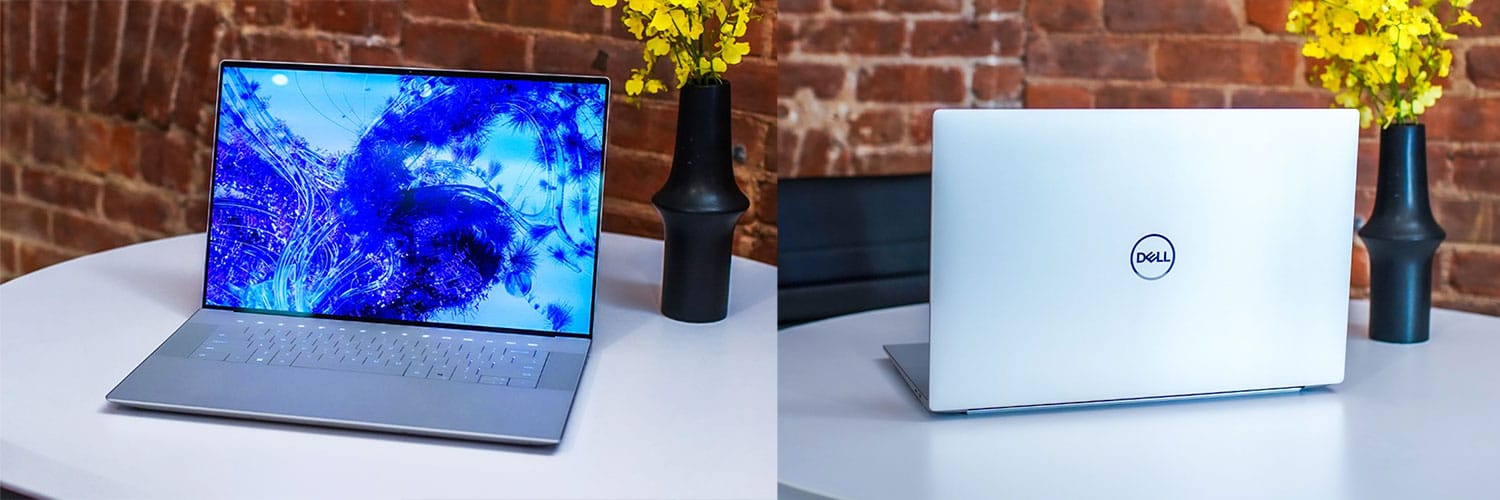
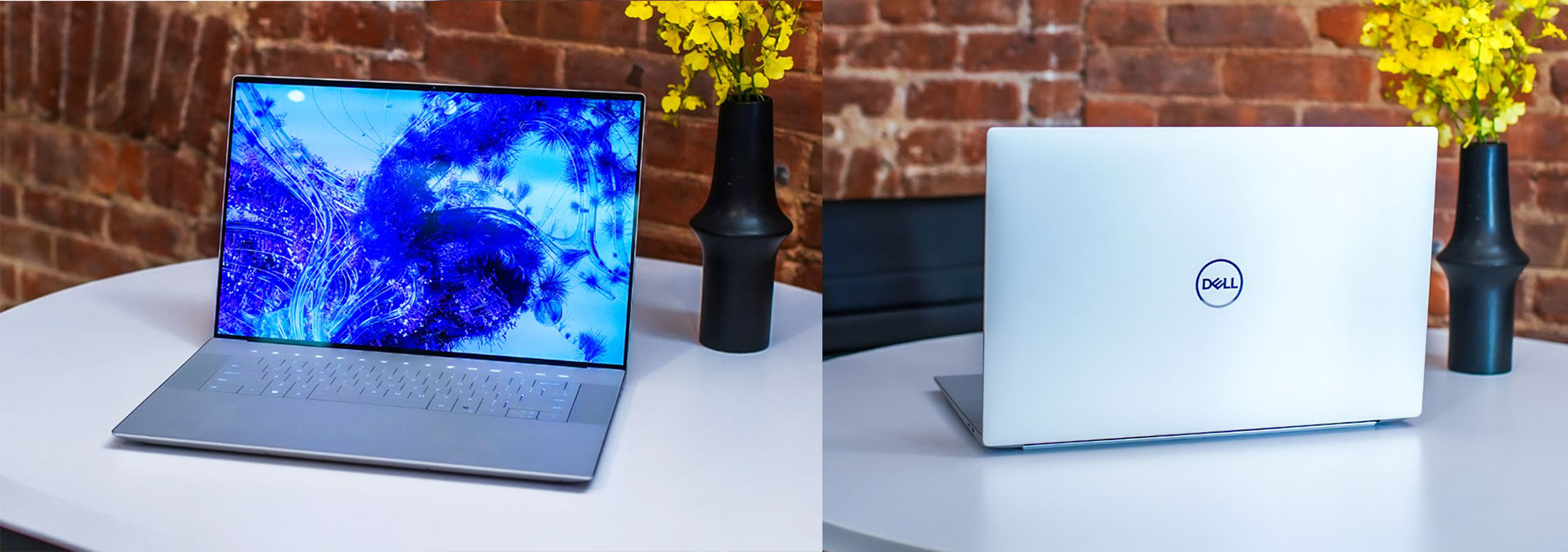
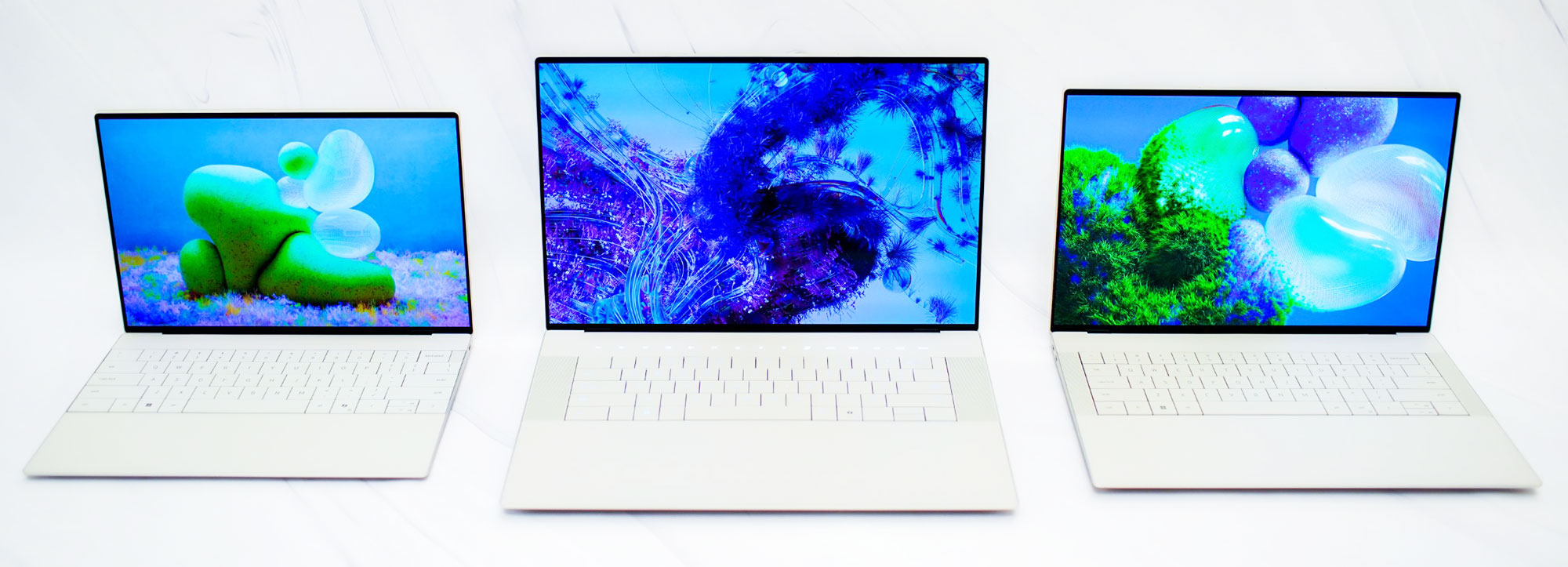
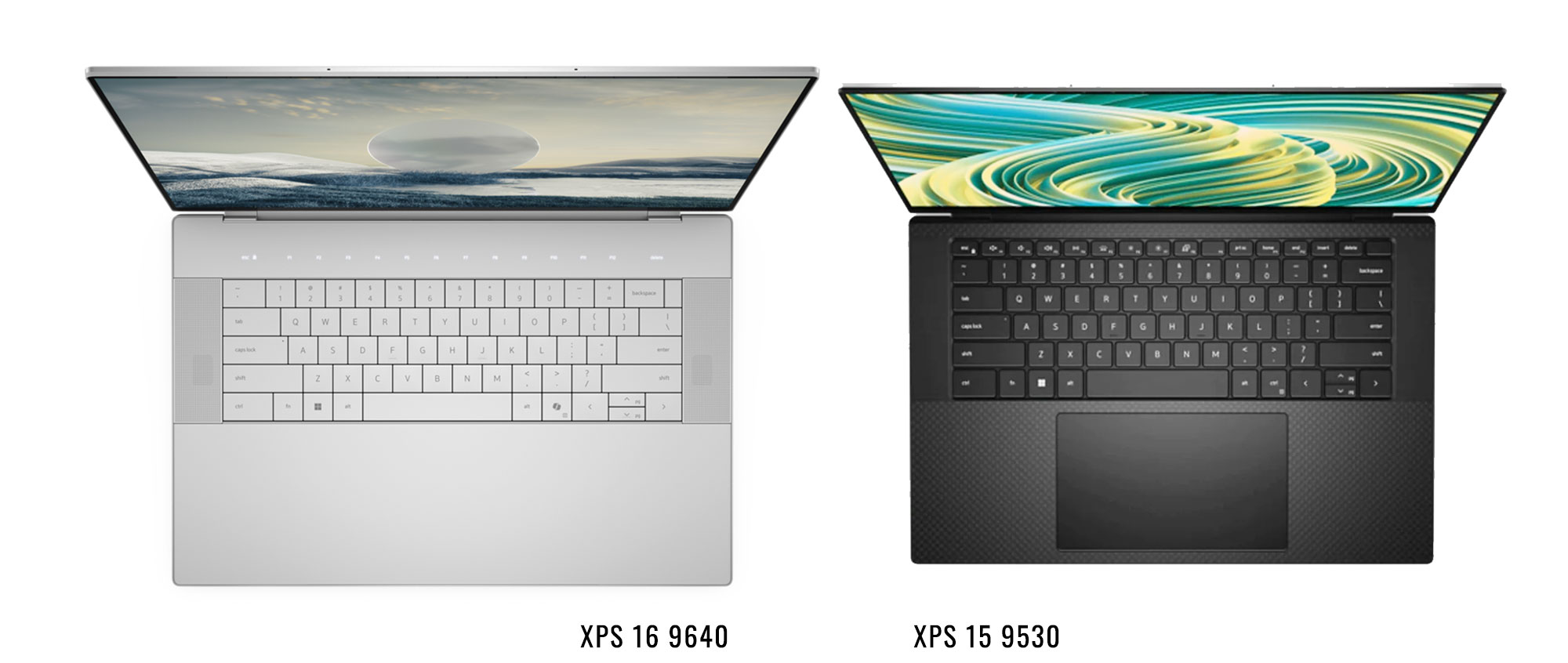
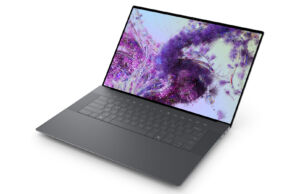
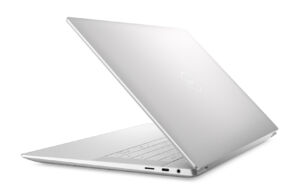
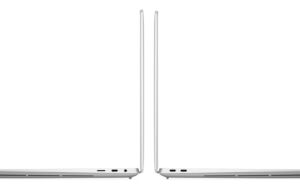
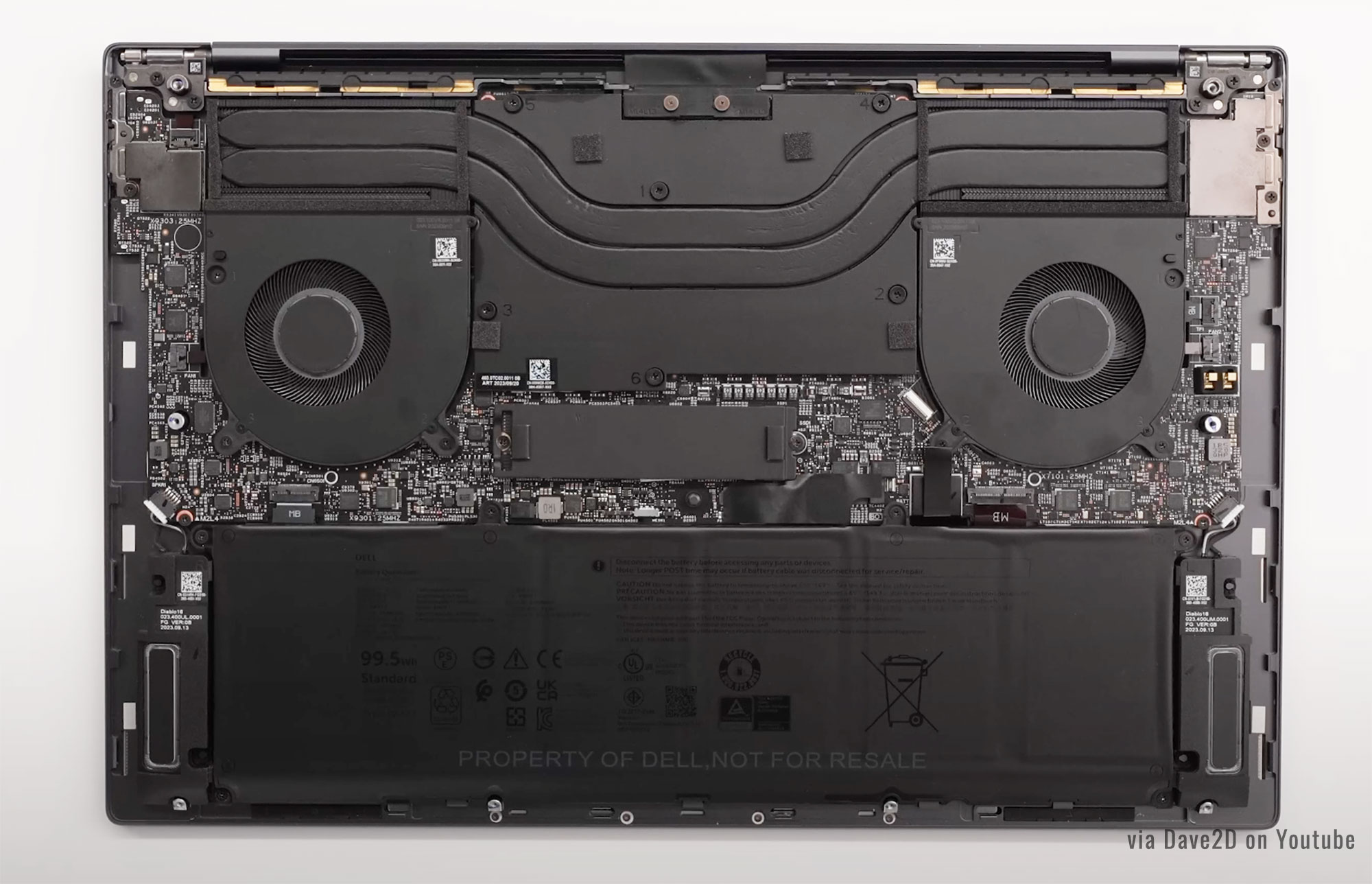

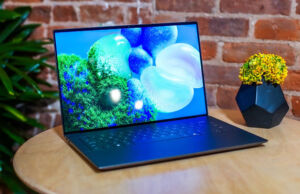
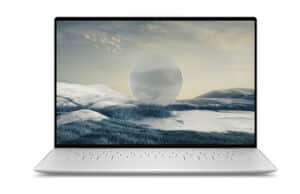
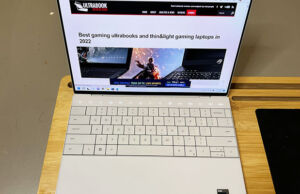

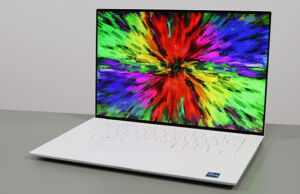





Julien VIGNERON
January 4, 2024 at 8:22 pm
as a XPS17 9720 owner, I think this new lineup is a step forward and a step backward at the same time :
+ oled
+ 90hz
+ FHD webcam
+ new design
– IO
– 60w max GPU
– not upgradable
– tactile function keys
oled / 90hs & fhd cam were the most claimed features of previous XPS since 2020
but 2023 XPS 17 is vastly more powerful than 2024 XPS 16
I hopefully wish Dell will create a new "XPS PRO" range this or next year with 15 & 17 inches screen size coming back alongside the best of both worlds
Andrei Girbea
January 4, 2024 at 8:34 pm
Thanks for the comment.
I wouldn't expect significant performance differences between the xps 16 2024 and the XPS 17 2023, except for the GPU where the 9730 is configurable with a 4080. I don't understand why there's no 4080 option for the XPS 16. The 60W vs 70W TGP difference is not that important
Altandmain
January 7, 2024 at 3:14 am
I had hoped that Dell would keep the larger laptop as an option. Perhaps they didn't have the sales to justify its continued existence. There don't seem to be any variants with Numpads either.
It seems that many companies have gotten rid of their 17 inch laptops across the board. I do see some companies like MSI, Razer, Asus, etc, seem to be offering 18 inch laptops, which I guess with the thinner bezels are now the new 17 inch.
Going forward, perhaps only the higher end workstation and gaming laptops are going to have 18 inch variants go on.
The main competition for the XPS 16 will be a revised Lenovo P1, Asus Zenbook Pro 16, Asus ProArt 16, a revised 16 inch HP Elitebook, and similar sized laptop. Until there are reviews, I suppose we will have to wait and see how this laptop compares.
For 2024, there will be CPU revisions, Intel's new generation and AMD will be releasing Zen 5 in 2024, but there will be no updates in GPUs. Nvidia is expected to release the 5000 series near the end of 2024 or in 2025. AMD will also release RDNA4 at this time.